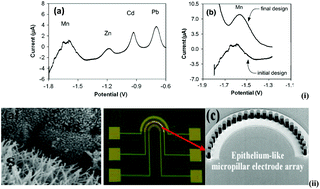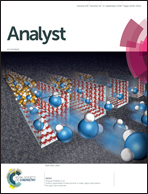Electrochemical microfluidics techniques for heavy metal ion detection
Abstract
Heavy metals refer to metals with a density above 5 × 103 kg m−3, such as lead (Pb), cadmium (Cd), arsenic (As), and mercury (Hg). Even a trace amount of heavy metals is detrimental to human health. With the increasing significance of detection of heavy metals, the use of the electrochemical detection technique combined with microfluidics is a promising strategy and has thus attracted wide attention from academia and is the subject of this review. First, this review introduces the basics of electrochemical detection and microfluidics. Second, this review presents and evaluates a variety of electrochemical microfluidics technologies for heavy metal ions detection that are user friendly, portable, inexpensive, and easy to manufacture compared to traditional methods. The categorization is based on different detected ions in the order of Pb, Cd, As, Hg, Mn, and Zn. Finally, the author summarizes the development of detection technology in recent years and puts forward a perspective for the future prospects.

- This article is part of the themed collection: Recent Review Articles


 Please wait while we load your content...
Please wait while we load your content...